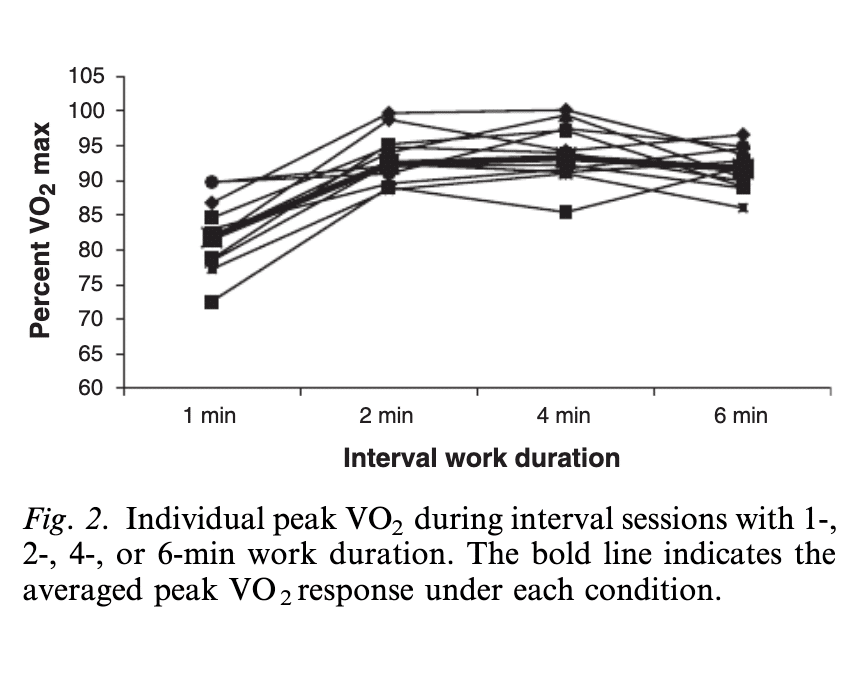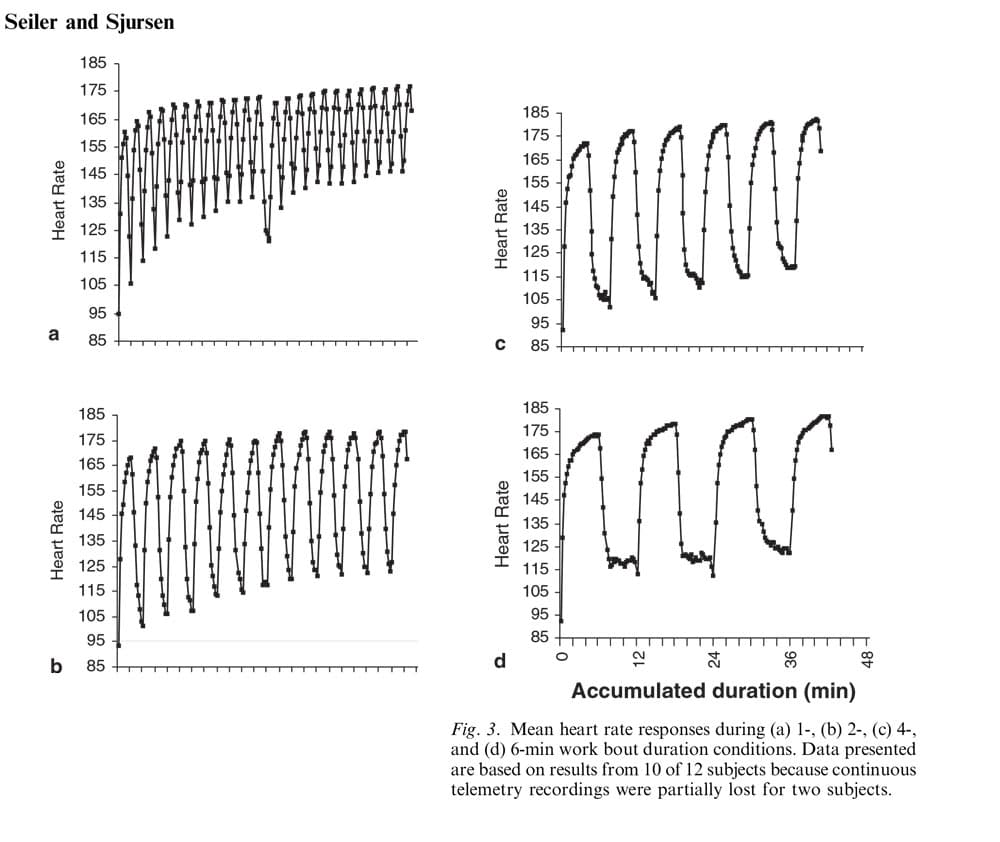
Decoding Interval Workouts for Ultramarathon Training
By Jason Koop
Head Coach of CTS Ultrarunning
Author “Training Essentials for Ultrarunning”
I hate to see athletes waste their time and energy, but it happens every day due to some fundamental misunderstandings of how interval training works. The structure of your workout matters. The amount of time you spend at a specific intensity, both in total and per interval, and the amount of rest you take between efforts, determine the stress you place on your body and the adaptations that will result. Training doesn’t have to be – and shouldn’t be – complicated, but it does need to be structured correctly in order to be effective.
How Interval Training Works
At its simplest, interval training is merely alternating between periods of higher and lower effort levels. You go harder or faster for a period, then slow down to rest, and repeat. The premise it that accumulating time at specific exercise intensities applies enough focused stress on your body to stimulate a training response: your body adapts to the stress so it’s ready for more.
The work is broken into intervals because the pace or intensity is often greater than you can currently sustain. If you are trying to improve your 10km time, you have to run faster than your current 10km pace, but you obviously can’t do that for a full 10 kilometers. So, we break the training into 1-km intervals because you can sustain a faster pace for that long. We incorporate periods of easy running between intervals so you can recover and repeat more 1-km intervals. Then we schedule similar workouts focused on the same type of efforts over a period of days, weeks, or months so the cumulative stress of that higher pace – along with adequate recovery – stimulates the adaptations that gradually enable you to run a full 10k faster than before.
Specificity Within Interval Training
To add greater precision to key ultraruning workouts, we target specific intensities or paces that correspond with the adaptations we want to target. This is where one of the first – and biggest – misconceptions originates.
All too often, coaches and athletes refer to training ‘energy systems’. In this misguided framework, each system has a discrete intensity range and an adaption associated with it. Train in the range and the workout is ‘good’. Train out of the range and the workout is ‘bad’. The problem is there are no on/off switches that say you’re using your aerobic system at this pace, your anaerobic system at that pace so on and so forth.
Your body does not know systems! Therefore, exercise at any intensity has an impact across the board, it’s just that certain parts of your physiology get tuned more or less depending on the intensity. So, when we refer to a VO2 max interval, this means that the interval will mainly, but not exclusively, improve your performance and physiology around the VO2 max. Other areas of your physiology will improve (pace at lactate threshold, endurance pace, etc), but the improvements revolve around the targeted intensity.
Intervals that work vs. intervals that don’t
Pop quiz- each of the interval sets below features the exact same duration of work, but only one is the most effective for improving VO2 max. Which one?
- 12 x 1 minute at maximum intensity with 1 minute recovery between intervals
- 4 x 3 minutes at maximum intensity with 3 minutes recovery between intervals.
- 2 x 6 minutes at maximum intensity with 6 minutes recovery between intervals.
We’ll come back to the answer in a bit.
Intervals that work are long enough to stress the desired physiology and separated by recovery periods that let an athlete repeat the effort. Intervals that don’t work are either too short or too long and separated by recovery periods that are too short or too long. They might be hard but don’t have a focus in a way that is productive. You get tired, but ultimately not stronger or faster.
How long should intervals be?
To keep interval training simple, consider that all intervals are completed at the highest pace you can sustain for the entire set of intervals. The combination of interval number, length and rest between intervals determines the target, not the other way around.
The higher the intensity, the less time you can sustain it. This shouldn’t be news to anyone. If you’re pacing yourself at the highest intensity you can sustain for three minutes, it’s going to be a very hard effort. The perceived exertion for the highest pace you can sustain for 20 minutes will be lower, but it’s still the highest pace you can maintain for the duration.
Enjoying This Article? Get More Free Running Training Tips
Get our coaches' best training advice, delivered straight to your inbox weekly.
Here’s how I prescribe five key workouts:
| Interval Name | Targeted Intensity Level | Example Workout |
| RecoveryRun | Recovery | 40min RR |
| EnduranceRun | Endurance | 2hr ER |
| SteadyStateRun | High-end Aerobic | 2hr ER with 2x30min SSR, 5min recovery between intervals |
| TempoRun | Lactate Threshold | 2hr ER with 3x12min TR, 6min recovery between intervals |
| RunningIntervals | VO2 max | 90min ER with 6x3min RI, 3min recovery between intervals |
Here is the underlying structure for the intervals:
| Interval Name | RPE | Typical Interval Time | Total Time-at-Intensity | Work:Rest |
| RecoveryRun | 4-5 | NA | 20-60 min | NA |
| EnduranceRun | 5-6 | NA | 30 min to 6+ hr | NA |
| SteadyStateRun | 7 | 20-60 minutes | 30 min to 2 hr | 5-8:1 |
| TempoRun | 8-9 | 8-20 minutes | 30-60 min | 2:1 |
| RunningIntervals | 10 | 2-4 minutes | 12-24 min | 1:1 |
The point of intervals is to maximize the body’s exposure to time-at-intensity. For VO2 max intervals that means creating an interval long enough to achieve and sustain an effort above 90% of your VO2 max. The figures below are from an older study from Seiler and Sjursen examining the physiological response to 1-, 2-, 4-, and 6-minute VO2 max intervals with 1:1 work:rest ratios (Seiler and Sjursen, 2004). Although the study is not new, the results and graphs have stood the test of time. Figure 2 shows percent of VO2 max, but the patterns are clearer to see in Figure 3.
Though each represents 24 minutes of interval work, you can see the differences in cardiovascular response as the intervals get longer. They found athletes achieve their highest oxygen consumption during the 4-minute intervals. In practice, intervals between 2-4 minutes are long enough for an athlete to ramp up to VO2 max intensity and maintain it for the duration of the interval. When athletes pace themselves through six-minute intervals, they don’t reach as high an intensity.
Optimal Work:Rest Ratios
The interval duration is one thing to get right, the work:rest ratio is another. For VO2 max intervals of 2-4 minutes, a 1:1 work:rest ratio works best. Going to a 1:2 ratio doesn’t improve the athlete’s exposure to time-at-intensity. As intervals get longer and the intensity drops, athletes don’t need as much recovery between intervals before they are ready to repeat the effort. That’s why the work:rest ratio for lactate threshold intervals (TempoRun) is 2:1, and grows even greater for high-end aerobic intervals (SteadyStateRun).
Getting back to my original question on the most effective VO2 max workout, the answer is B (4 x 3 minutes). The intervals in A are too short to reach VO2 max and stay there long enough to be effective. The intervals in C are so long most athletes would pace themselves at too low an intensity to effectively train VO2 max.
Wasted Effort is More Costly for Experienced Runners
When athletes first start training, the addition of any structure – even poor structure – is effective and they get stronger and faster. The more you progress, though, the harder it becomes to continue making progress. You don’t need to be an elite ultramarathon runner to reach the point of diminishing returns. It happens to virtually every runner who trains consistently for more than one year. That’s when the weakness of poorly structured training starts to take its toll and runners start to flounder. To avoid the frustration of wasted time and fruitless effort, take a look at your workouts and make sure they’re doing what you think they’re doing.



Comments 29
I seriously do not understand the relevance to Ultra Marathon training, where in the race the runner will never be working at anywhere near threshold level. I don’t recognise the training transfer. Probably my ignorance, but I would love someone to explain the scientifically justified benefits.
Author
Thank you for the question. There are some very long answers, but the simple way to explain it is that your body has multiple ways to produce energy from fat and carbohydrates and you’re using all of them at all times. Acutely, exercise intensity (i.e., percentage of VO2 max) governs how much of your total energy demand comes from each system. At low to moderate intensities, most of your energy comes from fat oxidation, with some coming from carbohdyrates. As intensity increases, carbohydrate contribution increases as the glycolytic system ramps up to deliver energy more quickly. The reason interval training is relevant to ultraendurance athletes who will compete at a sustained intensity of about 60% of VO2 max in events is because intervals stimulate the adaptations that allow athletes to increase VO2 max, increase mitochondrial density and function, increase the amount of lactate you can process per minute, and much more. The hard intervals are for building cardiorespiratory fitness so that you can compete at 60% of a bigger capacity.
Now… easy intensities also build VO2 max and contribute to adaptations throughout the entire range of capacities – all of these “systems” are connected. “Easy only” training is in vogue right now. But there’s an upper limit to the adaptations you can make when training is always easy to moderate, and the time required for easy-only training is massive and may be difficult to recover from or contribute to injuries (for some athletes). – Jim Rutberg, CTS Coach, co-author “Training Essentials for Ultrarunning”
You recruit more muscle fibres, increase neuromuscular connections, which increase overall capacity. You also lift the ceiling like Jason mentioned.
So we run ultras at a set percentage of our VO2MAX, (60%), if our VO2MAX is higher we’ll obviously be able to go faster at the same effort.
Pingback: 4 REASONS WHY SHORT INTERVALS WORK FOR IMPROVING PERFORMANCE - The magazine that never fails to amaze
Nice article. However, it might have been more helpful to have posted their Figure 2, showing the peak VO2 responses, instead of Figure 3, showing the mean heart rate responses. That graphic may more clearly demonstrate the differences you are discussing. Just a suggestion.
Author
We’ve added Figure 2 from the Seiler and Sjursen study, even though it’s a difficult graph to interpret because of the overlapping data. – CTS Coach Jim Rutberg
Can you please name the mentioned Seiler, Sjursen study?
Author
The study is linked to where it says “source” in the article. The study in question is: https://www.researchgate.net/publication/8326867_Effect_of_work_duration_on_physiological_and_rating_scale_of_perceived_exertion_responses_during_self-paced_interval_training
Pingback: Ultrarunners: How to Train for Mountains When You Live in a Flat Area - Jason Koop
Pingback: How to Leverage Cancelled 2020 Races to Crush 2021 Ultramarathon Goals - Jason Koop
Pingback: The Guide To Effective Cycling Interval Training - CTS
Pingback: Training Density: What It Is and Why It Matters - Jason Koop
In the suggested workouts it mentions long endurance runs prior to the interval training. Is this just an effort to log in the miles each week or does doing this prior provide significant advantages to the interval training? Thanks!
Ross, You don’t do the Endurance run “prior” to intervals. You simply go for a e.g. 90min run and you do the intervals within those 90 mins.
Pingback: Why Really Short Intervals Are So Effective for Improving Performance - Chris Carmichael
Hi, I am going to do a Vo2 max block but haven’t decided the interval structure yet. In this article you claim that the optimal length is somewhere between 2-4 minutes since shorter won’t achivev enough time above 90% of HRmax. But what about short intervals with short rest? Rönnstad has a study were they saw greater gains by doing 3*13*30/15s than a traditional 4*5 minutes. What’s your take on this?
https://www.youtube.com/watch?v=BpGesmNB9sI
What do TR, ER, SSR mean?
TR = Tempo Run
ER = Endurance Run
SSR = Steady State Run
I appreciate the long explanation for these supposedly simple concepts. Thanks
Great charts and science, this is super-helpful. Thanks for posting!
This is why I hired you guys! LOL
Corrine posts my workouts, I do them. I get faster! Isn’t that awesome? 🙂
BTW, I highly recommend the Tabata Timer: Interval Timer Workout Timer HIIT (for Android) to keep track of all the intervals. After ten minutes of running, my time/math skills are gone and this app keeps me on the straight and narrow!
https://play.google.com/store/apps/details?id=com.evgeniysharafan.tabatatimer
This little app takes a bit of fiddling but it changed my life.
Thanks, again, you all, for keeping us running fast!
very insightful; thx for sharing!
It looks like there is a mistake in the table of the five workouts, Tempo is where SteadySate should be, and vice-versa.
Good article
Author
Luis,
The interval names are in the correct order for running, where the typical nomenclature uses SteadyState to describe a high-end aerobic effort, and Tempo to describe a lactate threshold effort. For CTS cycling workouts use the opposite order, which we understand is a source of confusion. – CTS
Jason –
You write: “If you are trying to improve your 10km time, you have to run faster than your current 10km pace, but you obviously can’t do that for a full 10 kilometers.”
My question: Why not?
I think by “current 10km pace” he means your physiological potential for a 10km effort – as opposed to your actual PR – and the purpose of the intervals is to increase your physiological potential.
Pingback: URP Daily News | Tue, Jan 29 | Ultrarunnerpodcast.com
FYI, It looks like you have Steady State and Tempo swapped in your table above. Great article though, thanks!
Author
Steve,
The interval names are in the correct order for running, where the typical nomenclature uses SteadyState to describe a high-end aerobic effort, and Tempo to describe a lactate threshold effort. For CTS cycling workouts use the opposite order, which we understand is a source of confusion. – CTS